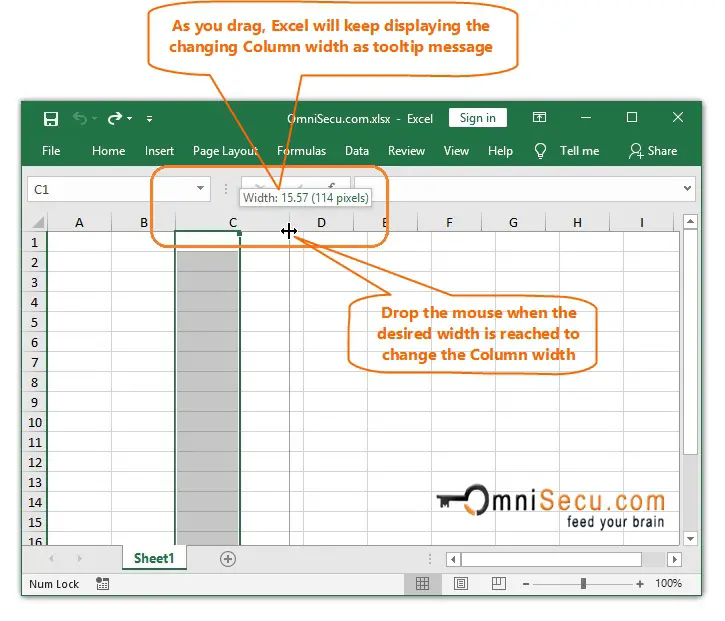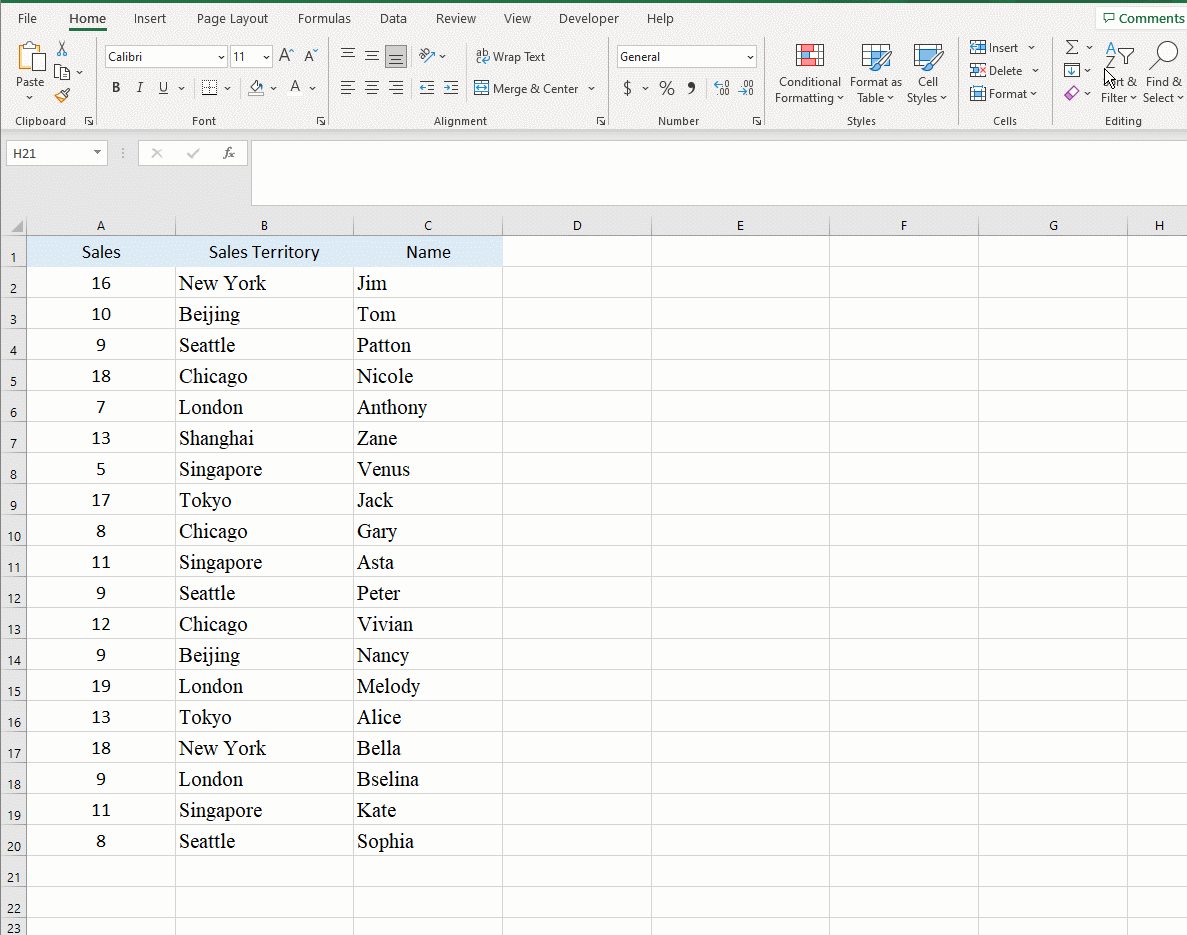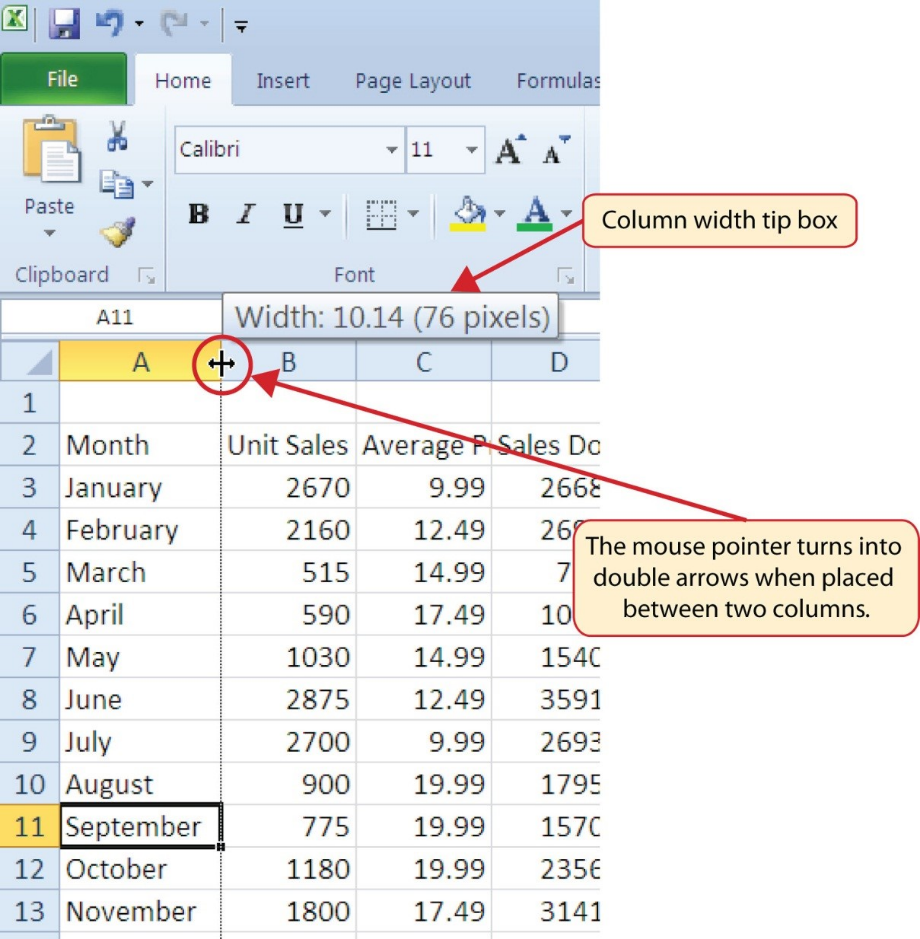Changing Excel Columns To Letters - The default cell reference style (a1), which refers to columns as letters and refers to rows as numbers, was changed. Web to convert a column number to a letter, you can use the following formula: This excel tutorial explains how to change column headings from numbers (1, 2, 3, 4) back to. To convert a column number to a letter using the char function, you can use the formula =char (64 + column_number). Web explain how to use the char function to convert column numbers to letters. Change column number to alphabet (a to z) convert column number to letter (any column) get column letter from column. =char (a + 64) where a is the column number. Web now when you return to your spreadsheet, the column headings should be letters (a, b, c, d) instead of numbers (1, 2, 3, 4). Web this can be done in two ways: This formula will return the corresponding letter for the column number in excel.
By using inbuilt functions or a custom one. Web this can be done in two ways: To convert a column number to a letter using the char function, you can use the formula =char (64 + column_number). Web now when you return to your spreadsheet, the column headings should be letters (a, b, c, d) instead of numbers (1, 2, 3, 4). Web explain how to use the char function to convert column numbers to letters. The default cell reference style (a1), which refers to columns as letters and refers to rows as numbers, was changed. Change column number to alphabet (a to z) convert column number to letter (any column) get column letter from column. Web to convert a column number to a letter, you can use the following formula: =char (a + 64) where a is the column number. This formula will return the corresponding letter for the column number in excel.
Web explain how to use the char function to convert column numbers to letters. Clear the r1c1 reference style selection in excel preferences. Web now when you return to your spreadsheet, the column headings should be letters (a, b, c, d) instead of numbers (1, 2, 3, 4). This excel tutorial explains how to change column headings from numbers (1, 2, 3, 4) back to. Web this can be done in two ways: Change column number to alphabet (a to z) convert column number to letter (any column) get column letter from column. This formula will return the corresponding letter for the column number in excel. To convert a column number to a letter using the char function, you can use the formula =char (64 + column_number). =char (a + 64) where a is the column number. By using inbuilt functions or a custom one.
How To Change The Column Width In Excel Worksheet 6419 Hot Sex Picture
Web now when you return to your spreadsheet, the column headings should be letters (a, b, c, d) instead of numbers (1, 2, 3, 4). Web to convert a column number to a letter, you can use the following formula: By using inbuilt functions or a custom one. The default cell reference style (a1), which refers to columns as letters.
Excel Tips 23 Change Column Headings from Letters to Numbers in Excel
Web now when you return to your spreadsheet, the column headings should be letters (a, b, c, d) instead of numbers (1, 2, 3, 4). Clear the r1c1 reference style selection in excel preferences. This formula will return the corresponding letter for the column number in excel. By using inbuilt functions or a custom one. To convert a column number.
How To Turn Support Poles Into Columns The Chronicles Of Home Small We
=char (a + 64) where a is the column number. Web now when you return to your spreadsheet, the column headings should be letters (a, b, c, d) instead of numbers (1, 2, 3, 4). This excel tutorial explains how to change column headings from numbers (1, 2, 3, 4) back to. The default cell reference style (a1), which refers.
How To Convert Rows To Columns In Excel Riset
This excel tutorial explains how to change column headings from numbers (1, 2, 3, 4) back to. Web explain how to use the char function to convert column numbers to letters. To convert a column number to a letter using the char function, you can use the formula =char (64 + column_number). Web to convert a column number to a.
Changing Width of Columns and Rows Computer Applications for Managers
Web explain how to use the char function to convert column numbers to letters. By using inbuilt functions or a custom one. Web now when you return to your spreadsheet, the column headings should be letters (a, b, c, d) instead of numbers (1, 2, 3, 4). To convert a column number to a letter using the char function, you.
How To Convert Text Files Into Excel Using Vba Step By Step Guide Riset
Clear the r1c1 reference style selection in excel preferences. Web this can be done in two ways: This excel tutorial explains how to change column headings from numbers (1, 2, 3, 4) back to. =char (a + 64) where a is the column number. To convert a column number to a letter using the char function, you can use the.
How to Delete Columns and Rows in Microsoft Excel
This formula will return the corresponding letter for the column number in excel. This excel tutorial explains how to change column headings from numbers (1, 2, 3, 4) back to. The default cell reference style (a1), which refers to columns as letters and refers to rows as numbers, was changed. Web now when you return to your spreadsheet, the column.
How To Move Excel Columns? (Super Easy Tutorial) My Microsoft Office Tips
The default cell reference style (a1), which refers to columns as letters and refers to rows as numbers, was changed. To convert a column number to a letter using the char function, you can use the formula =char (64 + column_number). Change column number to alphabet (a to z) convert column number to letter (any column) get column letter from.
1.2 Entering, Editing, and Managing Data Beginning Excel 2019
Web explain how to use the char function to convert column numbers to letters. Web to convert a column number to a letter, you can use the following formula: =char (a + 64) where a is the column number. This formula will return the corresponding letter for the column number in excel. This excel tutorial explains how to change column.
Change Excel columns back to letters • AuditExcel.co.za
The default cell reference style (a1), which refers to columns as letters and refers to rows as numbers, was changed. By using inbuilt functions or a custom one. Web explain how to use the char function to convert column numbers to letters. Change column number to alphabet (a to z) convert column number to letter (any column) get column letter.
This Excel Tutorial Explains How To Change Column Headings From Numbers (1, 2, 3, 4) Back To.
Web to convert a column number to a letter, you can use the following formula: Web explain how to use the char function to convert column numbers to letters. To convert a column number to a letter using the char function, you can use the formula =char (64 + column_number). =char (a + 64) where a is the column number.
Web Now When You Return To Your Spreadsheet, The Column Headings Should Be Letters (A, B, C, D) Instead Of Numbers (1, 2, 3, 4).
By using inbuilt functions or a custom one. This formula will return the corresponding letter for the column number in excel. Web this can be done in two ways: Change column number to alphabet (a to z) convert column number to letter (any column) get column letter from column.
The Default Cell Reference Style (A1), Which Refers To Columns As Letters And Refers To Rows As Numbers, Was Changed.
Clear the r1c1 reference style selection in excel preferences.









